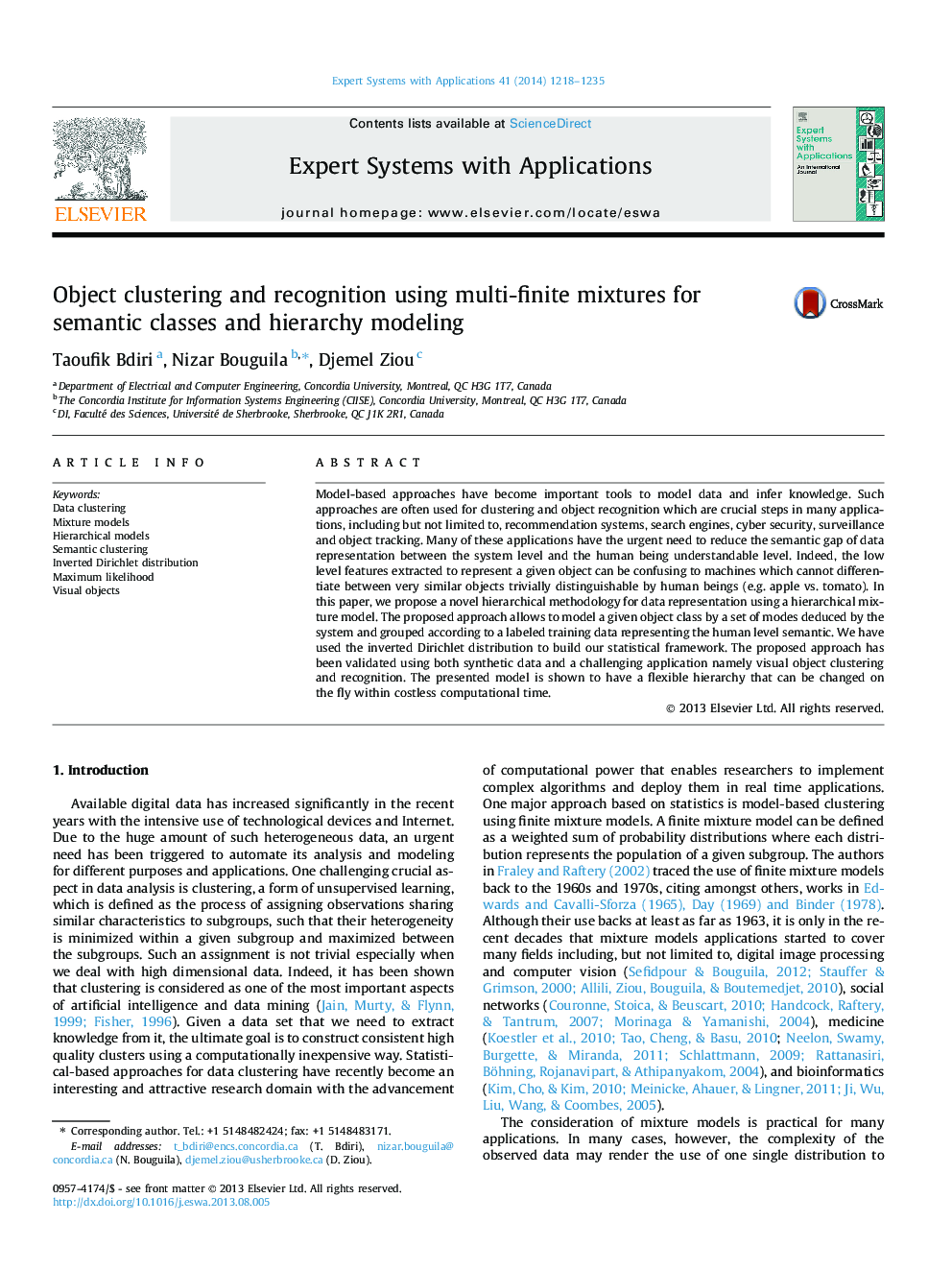| Article ID | Journal | Published Year | Pages | File Type |
|---|---|---|---|---|
| 386795 | Expert Systems with Applications | 2014 | 18 Pages |
•A hierarchical statistical model for object clustering and recognition is proposed.•An algorithm is developed for the learning for the proposed hierarchical model.•Extensive experiments are conducted to validate the hierarchical model.
Model-based approaches have become important tools to model data and infer knowledge. Such approaches are often used for clustering and object recognition which are crucial steps in many applications, including but not limited to, recommendation systems, search engines, cyber security, surveillance and object tracking. Many of these applications have the urgent need to reduce the semantic gap of data representation between the system level and the human being understandable level. Indeed, the low level features extracted to represent a given object can be confusing to machines which cannot differentiate between very similar objects trivially distinguishable by human beings (e.g. apple vs. tomato). In this paper, we propose a novel hierarchical methodology for data representation using a hierarchical mixture model. The proposed approach allows to model a given object class by a set of modes deduced by the system and grouped according to a labeled training data representing the human level semantic. We have used the inverted Dirichlet distribution to build our statistical framework. The proposed approach has been validated using both synthetic data and a challenging application namely visual object clustering and recognition. The presented model is shown to have a flexible hierarchy that can be changed on the fly within costless computational time.
